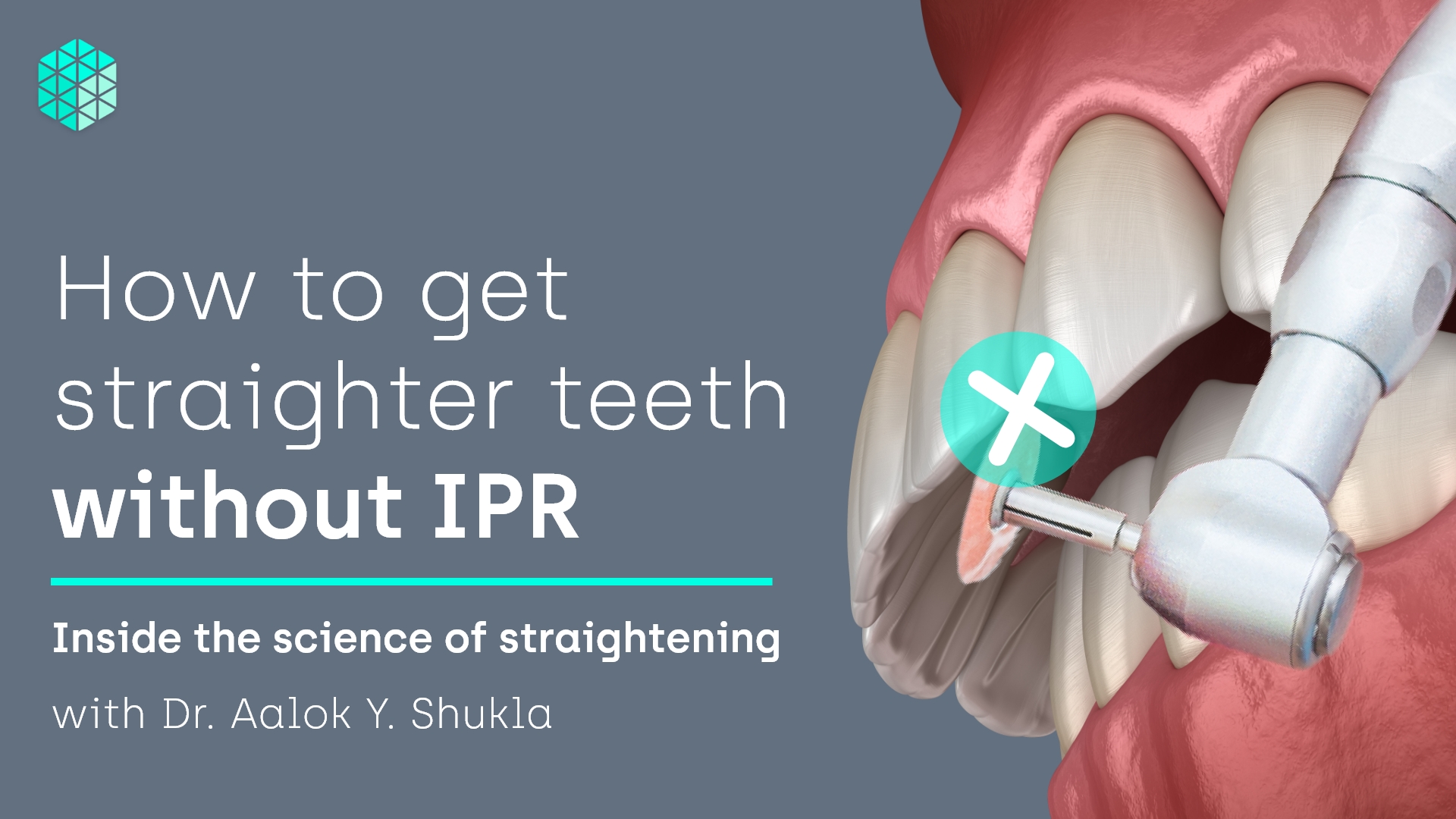
How to get straighter teeth without Interproximal Reduction (IPR)

Table of contents
#1 How to get straight teeth without braces
#2 What is Interproximal Reduction and what can go wrong
#3 Evolution of teeth straightening: from invasive to non-invasive
#4 Non-invasive clear aligners: how do aligners work?
#5 What can affect treatment duration
Interproximal reduction is a commonly used procedure to create space between teeth, making them smaller in size and allowing them to fit side-by-side better. If you’re wondering how to get straight teeth without IPR, or if you need IPR to use invisible aligners, you’ve come to the right place! In this blog you will better understand how aligners work to create the space needed to fix crooked teeth.
#1 How to get straight teeth without braces
When we think about teeth straightening, what comes to mind is usually fixed metal braces, things being attached to our teeth, visits to the clinic, and painful, expensive procedures. Nowadays, modern technology enables non-invasive straightening with invisible aligners.
This new, non-invasive method works for a multitude of cases, from gaps to crowded, overlapping or protruding teeth. Generally speaking, all teeth straightening procedures work by adjusting the space available for your teeth. Let’s take a closer look at different ways to create space between teeth.
1.1 Three different ways to create space between teeth
1.1.1 Interproximal reduction (IPR)
Removing the enamel (top layer) of your teeth to physically change their shape and make them smaller. This procedure can be used to change the shape of teeth before aligning them, allowing for easier treatment of more severe crowding or to make irregular shaped teeth more symmetrical.
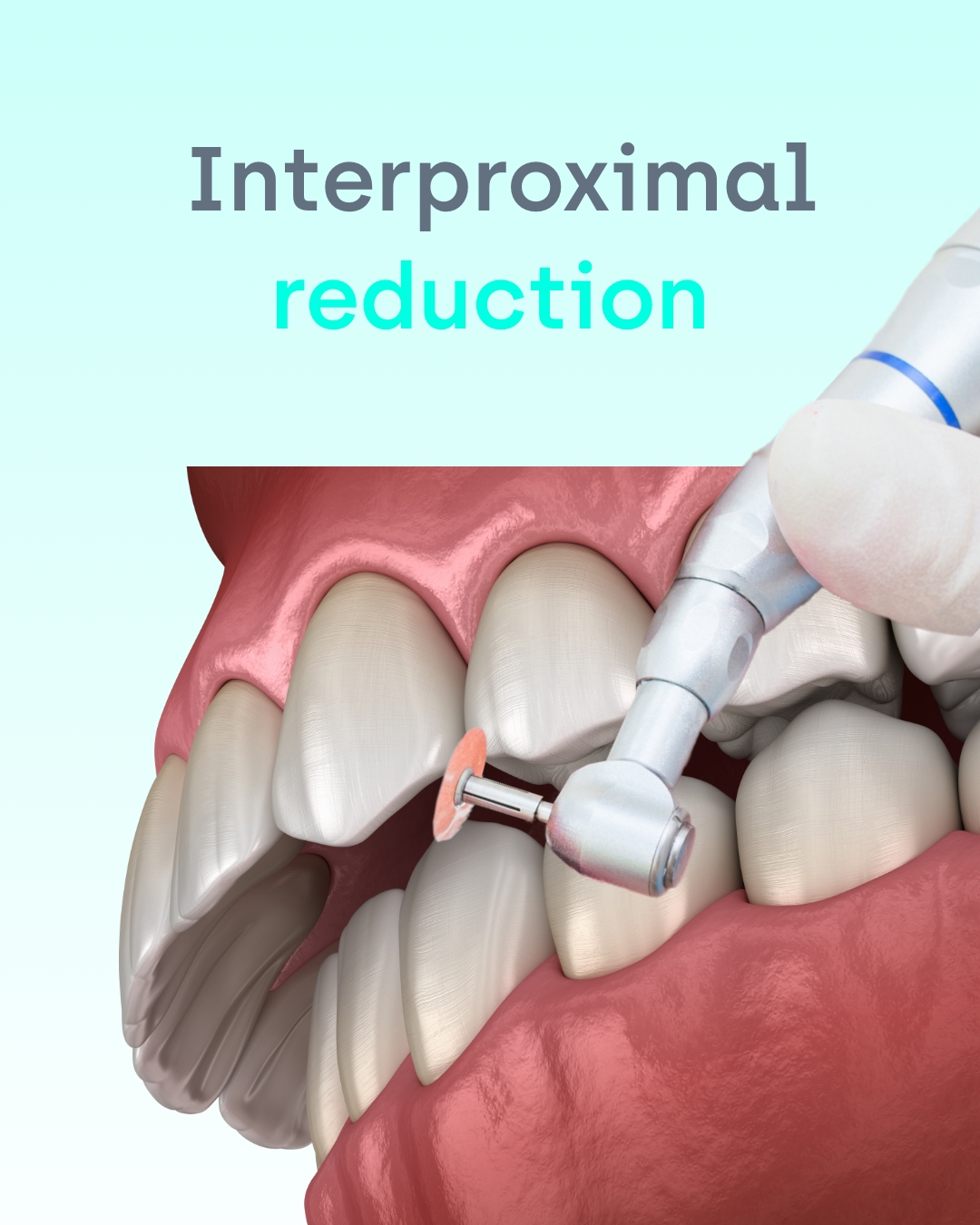
1.1.2 Tooth extraction
Removing one or more teeth to create space for other teeth to align into. This method is used to treat severe cases when teeth are extremely crowded and the bite and jaw function are affected.
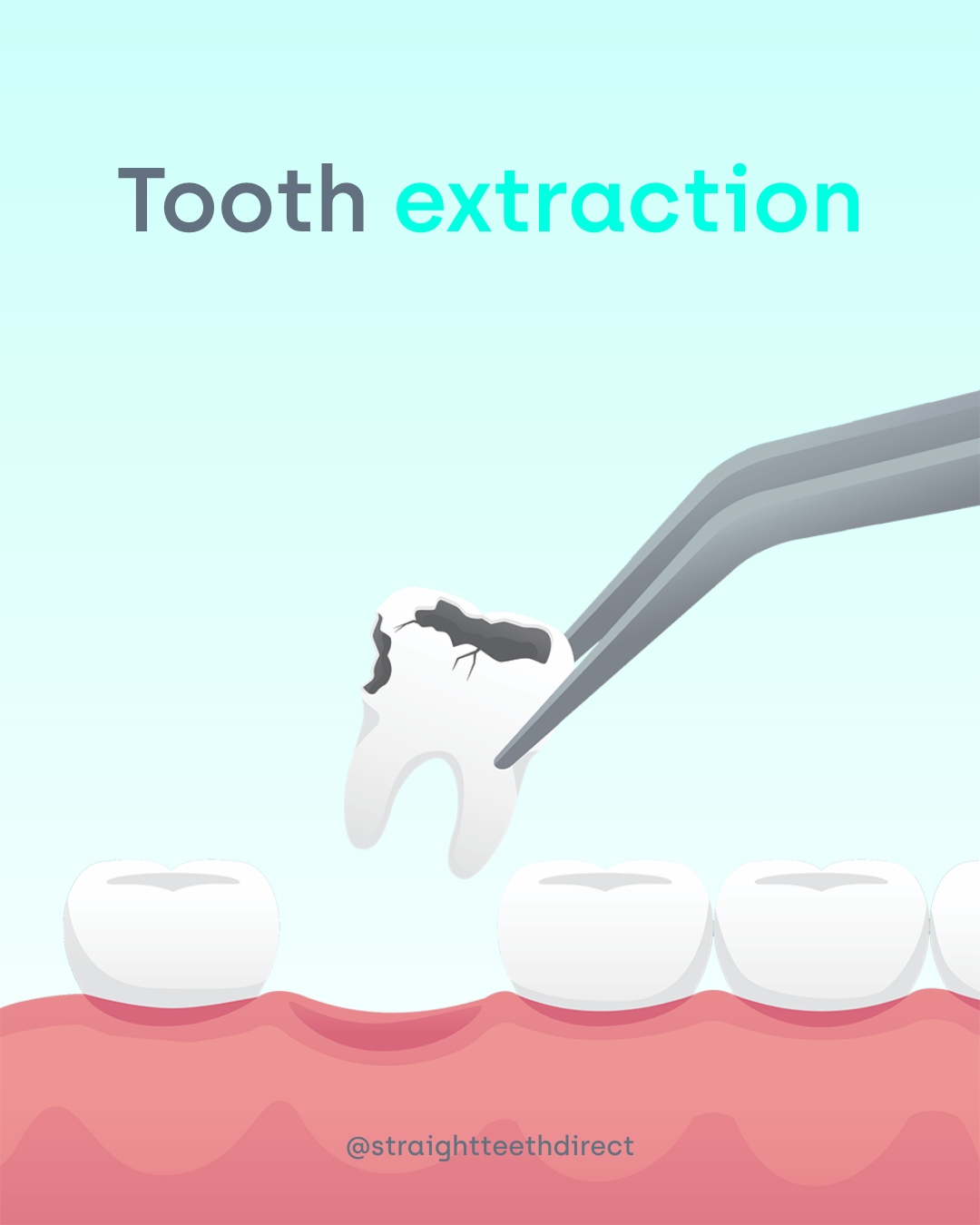
1.1.3 Arch expansion
Expanding your dental arch for all your teeth to fit nicely next to each other. This method can be used in up to 80% of all cosmetic teeth straightening cases with invisible aligners. For example, where a natural looking smile with the best tooth alignment is desired.
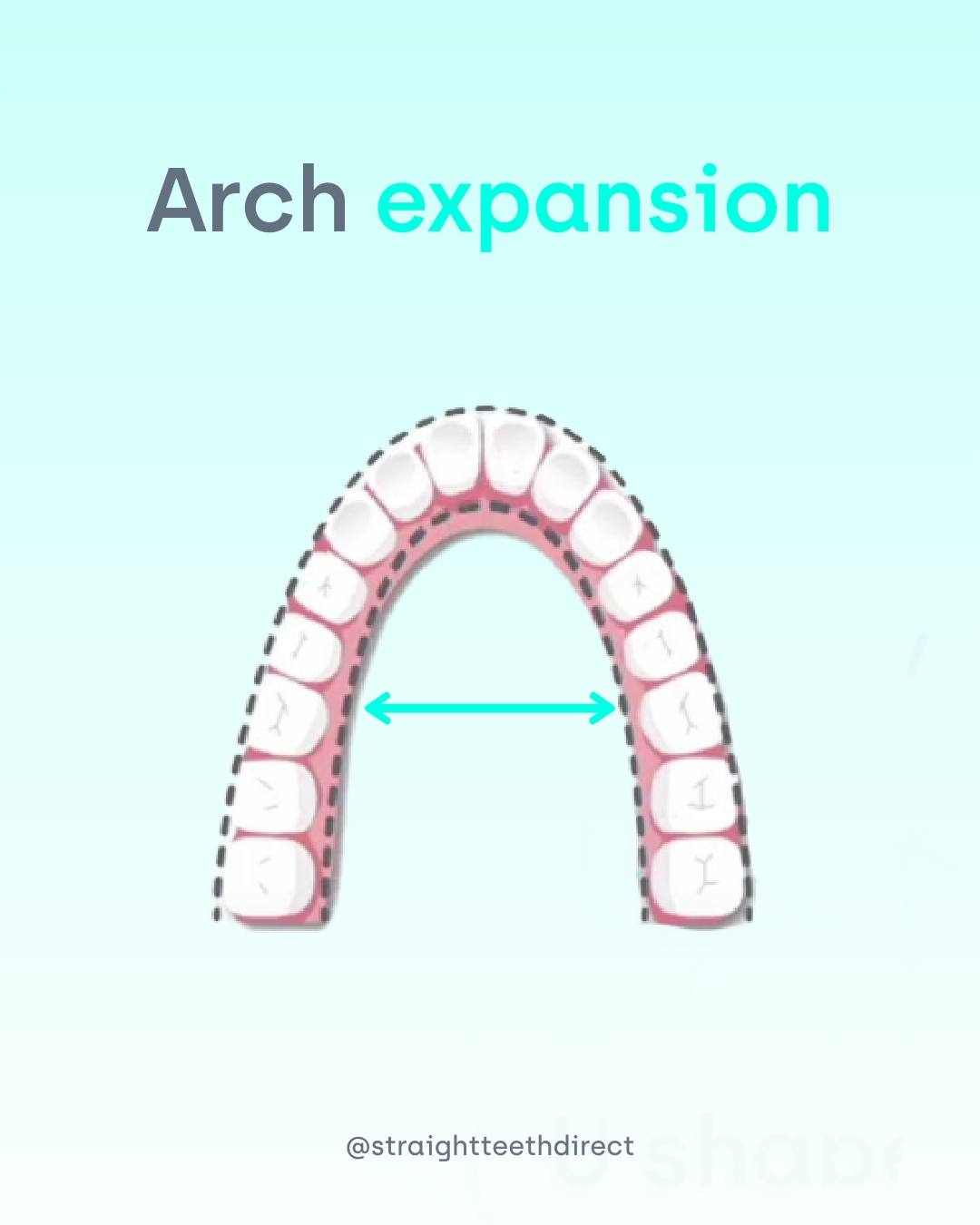
#2 What is Interproximal Reduction (IPR) and what can go wrong
As mentioned before, IPR removes small parts of enamel from your tooth to give it a new shape, making it an invasive dental procedure. It creates more space by making the teeth slimmer or smaller, which can help to create a more harmonious smile or facilitate straightening.
Unfortunately, enamel is the only protective layer over the tooth and it cannot be regrown by the body. If IPR is done incorrectly, it can result in the enamel being completely removed, exposing the underlying dentine and making teeth more sensitive. Also, if too much of the enamel is removed, the tooth shape can end up being all wrong, and these mistakes are irreversible.
#3 Evolution of teeth straightening: From invasive to non-invasive
If you didn’t have braces yourself as a kid, then you certainly had a friend who did! But how do fixed braces even work?
3.1 What are braces?
Fixed braces are a set of (usually) metal fittings attached to the teeth that can exert constant, strong forces on them to move teeth into a new position. The parts attached to the tooth surface (generally with strong glue) are called brackets, and the wire that causes a directional force is then attached to these brackets. Additional things like elastic bands can further increase the pressure.
3.2 The evolution of braces
Braces have evolved over time, from fixtures on the front of teeth, behind the teeth, wide braces and invisible brackets, all the way to a hybrid combination of aligners and small, button-like attachments (think of them like mini-brackets to give aligners more grip on teeth). However, these options all fall under the category of invasive treatment, as there is always some kind of long-term attachment to your teeth.
3.3 The side effects of invasive dental procedures
Most forms of treatment have some side effects, and with invasive braces these are a few of them:
- hard to clean properly
- tooth staining
- increased plaque
- tooth decay
- gum irritations and disease
- brackets or attachments can harm the enamel where they are glued on
#4 Non-invasive clear aligners: how do aligners work?
Invisible aligners without attachments are a non-invasive teeth straightening method, because no permanent physical changes are made to teeth. As mentioned before, dental arch expansion is the key component in how aligners work. The arch is widened slightly to create space between teeth, after which they can be moved and aligned to fit nicely side-by-side. This is all done in three phases…
4.1 The three phases of teeth straightening with aligners
Invisible aligners work in three phases: expansion, alignment, fine tuning.
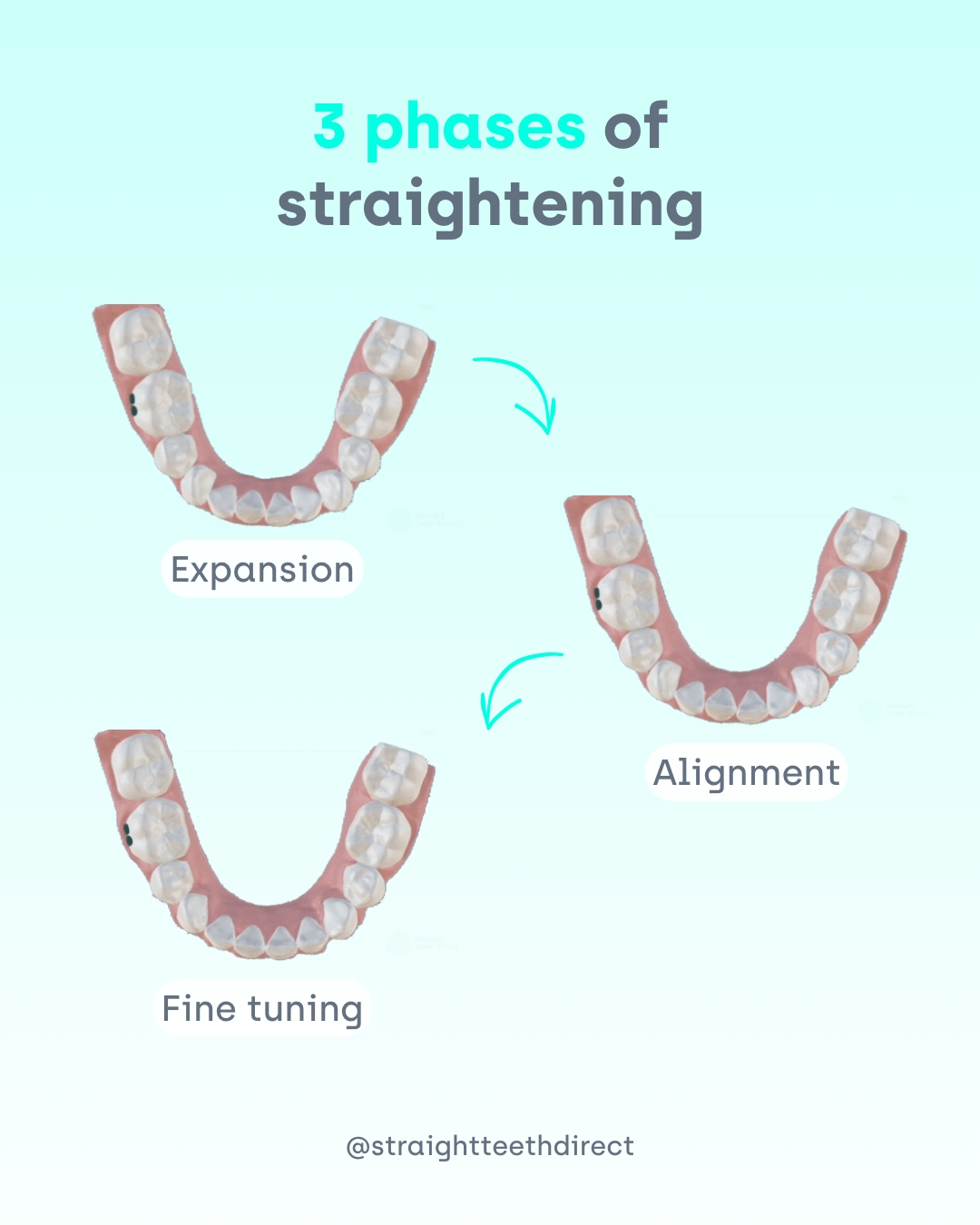
- Expansion: space is created between teeth so that they have room to move
- Alignment: teeth are rotated or moved into their naturally straightest position
- Fine tuning: last adjustments are made to complete the smile transformation
Each aligner represents a new tooth position, and they need to be worn for two weeks, 22h/day. This gives your teeth enough time to move under the constant pressure and settle into their new position. Remember: we are dealing with living tissue and bone structure in your body, and it can only respond at a certain rate. Patience is key!
#5 What can affect aligner treatment duration
The best ways to positively impact your aligner treatment duration and stay on track are:
- Wearing aligners for 22h/day for 2 weeks, or as instructed by your dentist
- Maintaining proper oral hygiene (brushing and flossing after every meal!)
- Not skipping aligners or trying to speed things up by wearing them for shorter periods
- Staying on schedule with aligner check-ups (whether in-clinic or remote with the Straight Teeth Direct™ app)
- If using Straight Teeth Direct™, remember to use your chewies 3 times a day for 3 minutes each!

Still thinking about it?
Fill in your email to receiveyour free guide!


















